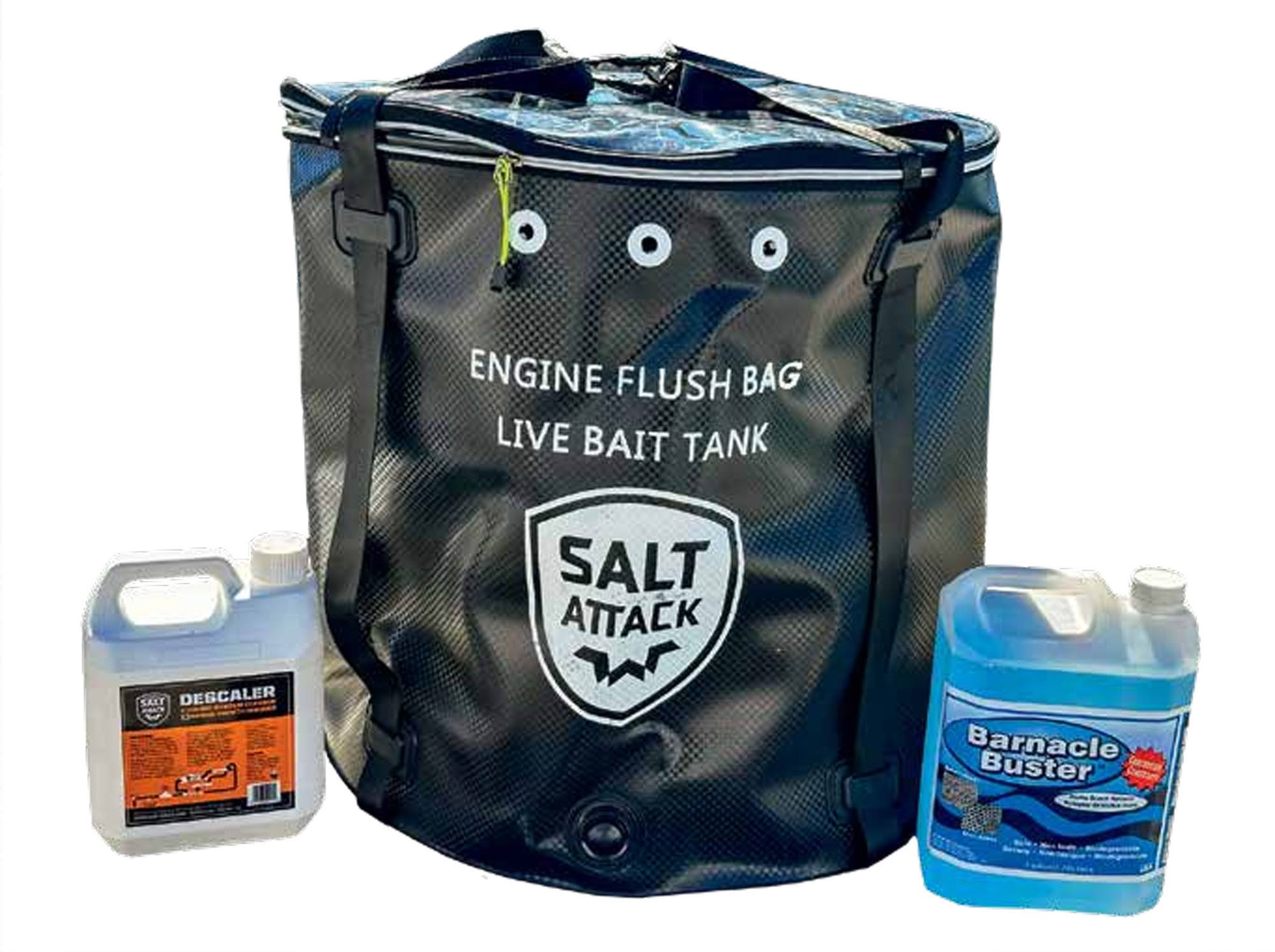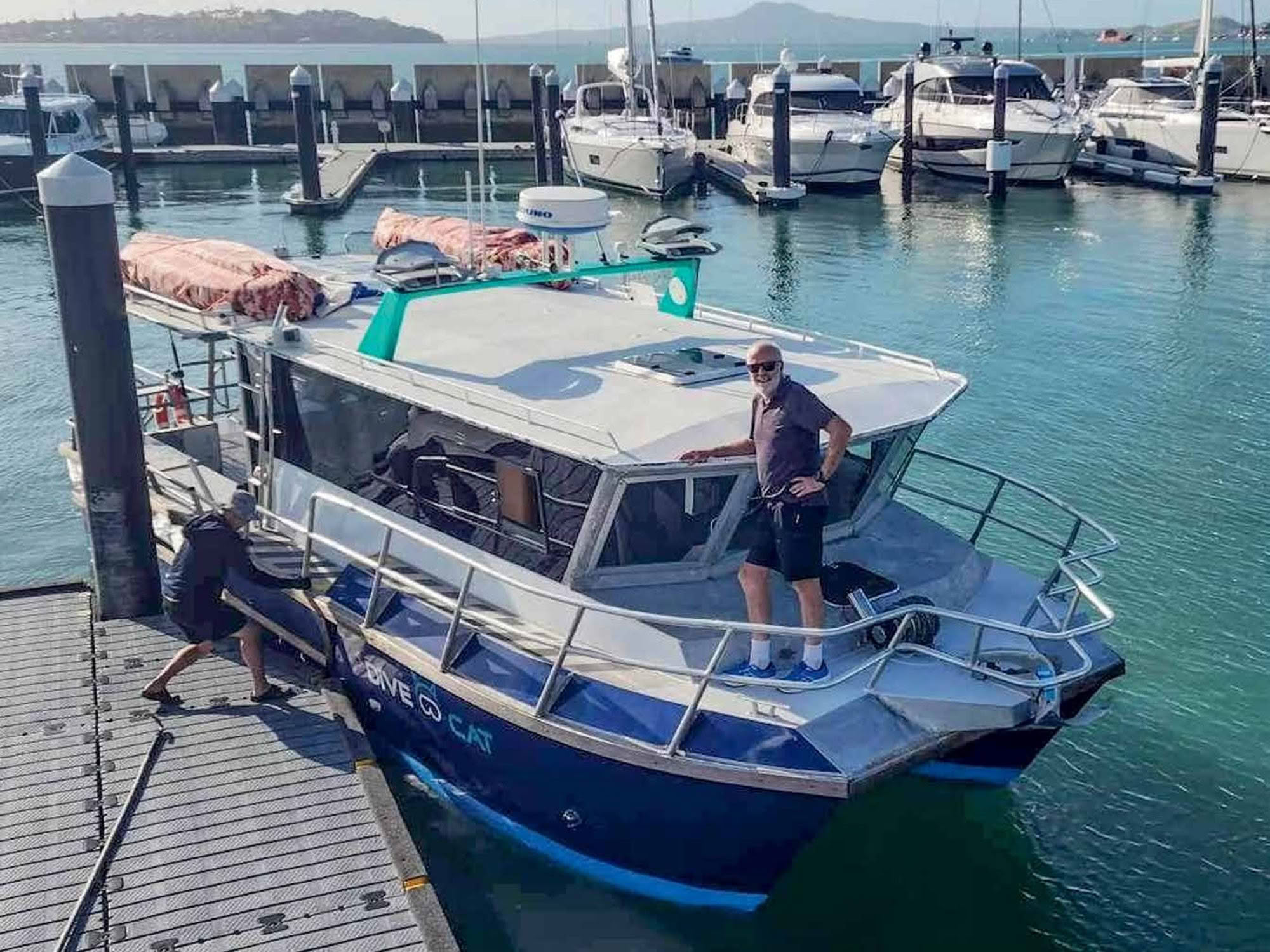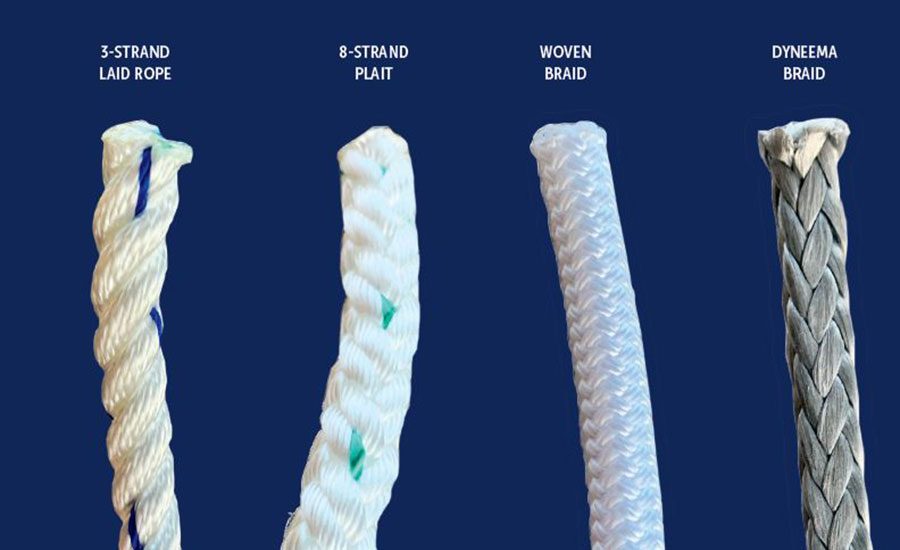

Let’s get the first question out of the way: When it is ‘rope’ and when is it ‘rode’?
When you go to the marine chandlers or even the hardware store, you will not see any ‘rode’ for sale – you can only buy rope. But what it is called on a boat depends on where you use it. When you attach it to the anchor it becomes the rode. If you use it to tie the boat up to the dock it is a line. Attached to the mast it becomes part of the rigging, while the ropes that pull a sail up or down are called halyards. When tied to the front of a dinghy it is a painter. Arguably the only ropes on the boat are the tow rope and the rope to ring the bell, both absent on most modern boats.
Having cleared that all up, the term ‘rode’ actually refers to three components of the anchoring system: The rope portion, the chain, and the swivel. So, while you let out the rode to lower the anchor, part of that may in fact be the anchor rope. Confused? Never mind, most non-traditionalists don’t get too fussed what you call it – what matters is what it is made of.
And thereby hangs the rub, to dig out another old phrase that might be appropriate. Because the choice of size, material, and construction (braided, stranded or plaited) can make a major difference to the effectiveness of your anchoring system, and in particular the operation of powered anchor winches. Get it wrong and the winch will slip, jam or break off expensive pieces. Less seriously, you could spend up to thousands of dollars for a type of material or construction that is unnecessary.
 Nylon rope is soft and curls easily around the gypsy.
Nylon rope is soft and curls easily around the gypsy.
Added to this is the current shortage of all manner of materials sourced from overseas. Marine supplies are also caught up in the global logistics issues caused by Covid-19, and sourcing the correct material may be difficult, expensive or even impossible. So, will an alternative product work or not? Let’s explore the options.
We will start by splitting the discussion between hauling your anchor by hand or with an automatic winch/ capstan (or windlass, depending on whether it is vertical or horizontal. We won’t worry too much about the finer points of this just now.)
If you still use muscle power to lift your anchor, even if you use a capstan-type electric motor to provide the main lifting power, then the choice is relatively easy and not too cost-prohibitive. There are four main considerations: Strength, floating characteristics, handling and price.
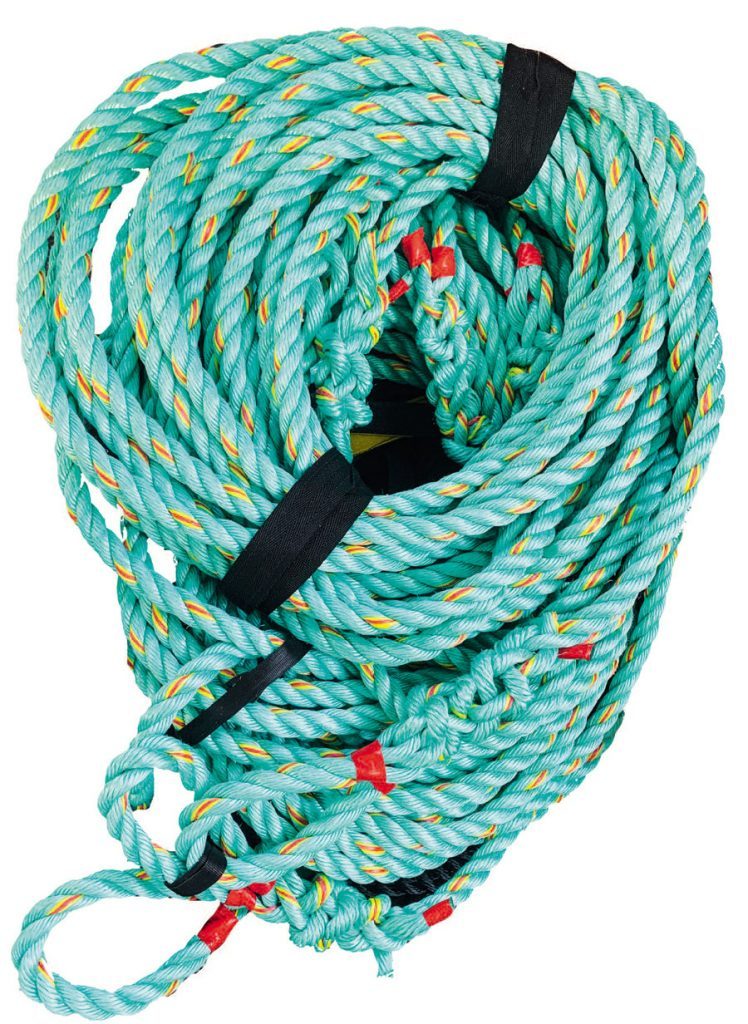 Polypropylene is stiff, usually brightly coloured and best used for mooring lines.
Polypropylene is stiff, usually brightly coloured and best used for mooring lines.
The most common synthetic ropes are made either of nylon, polypropylene or polyester. While there are also some exotic materials like Dyneema, Dacron and Spectra, these are mostly used by performance sailing vessels where weight and strength outweigh the considerable extra cost. And at the lower end there is one more option of polyethylene, but this is generally only available in smaller diameters and bright colours for ski ropes and similar water toys. In most circumstances it comes to a choice between just those first three.
NYLON is the most expensive of the three main contenders, and although the strongest when dry it loses some strength when wet. Nylon is heavier than water, hence it sinks, is extremely hard-wearing and is UV-resistant. It has a fair amount of stretch, which is good in an anchor rope, since it acts like a shock-absorber to reduce jarring as the boat bounces around on the anchor. And for a manual anchor rope, nylon is also the softest on the hands while remaining easy to grip. A good quality nylon anchor rope will last for many years and is a wise investment.
POLYESTER is stronger than nylon when wet, equally resistant to wear and sunlight, and also sinks. It can be somewhat cheaper than nylon and is often used for permanent moorings where the strength is the most important criteria. However, it has very little stretch, and for this reason alone is not generally preferred as an anchor rope.

POLYPROPYLENE is the weakest and cheapest of the three, also has a reasonable amount of stretch but is the only one that is lighter than water and so floats. This rope is slippery when wet and can be hard on the hands, and it also melts at fairly low temperatures – a hot engine exhaust may be enough. The low price is probably the main reason it is offered in some anchor packs. However, the fact that it floats is a disadvantage for anchoring since a floating line is more easily tangled around a propeller.
We did a quick comparison of different specifications of the popular 12mm diameter three-strand rope packs available at most marine suppliers, as listed below. Note we have not listed prices, since these varied greatly, but in general the cost will run in descending order from nylon to polypropylene.
So, for a small boat with good old muscle-power as the anchor winch, there really is no decision: go with nylon. The standard three-strand laid rope is the easiest to handle with bare hands or even gloves, so no need to fork out for braid or plaited types. This also applies to non-automatic capstan winches, where you must manually hold the rope tight against the round drum – nylon three-strand is the best option here as well.
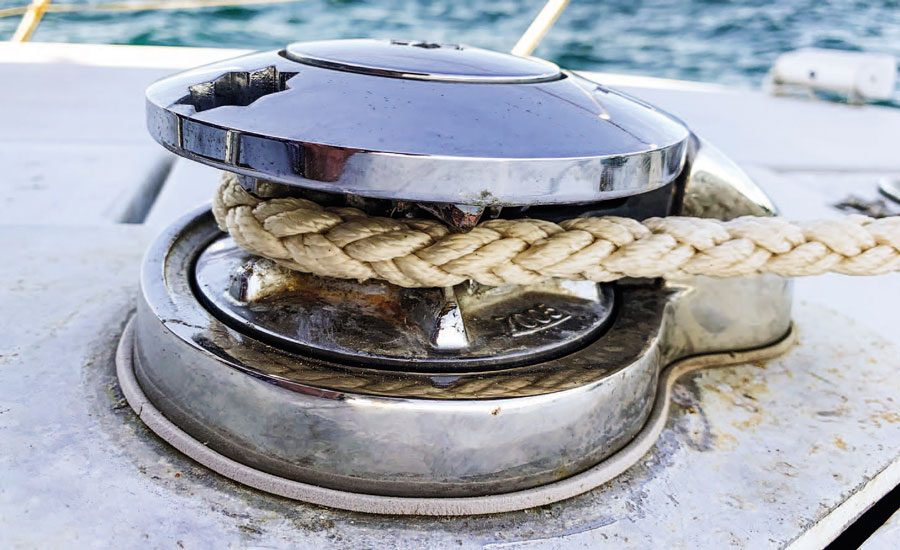
Electric capstans work better with some ropes than others.
ANCHOR WINCHES
If you have an automatic anchor winch the decision becomes a bit more complex. Although the same rules apply for the material used (i.e. nylon is best), another factor comes into play – the way the rope is constructed. This is important because of the most critical component of an automatic anchor winch, called the rope and chain gypsy. This is the notched wheel that has different areas to grip both the anchor chain and the rope. And gypsys are very, very picky – in many cases they will only work properly with one type and diameter of rope.
When talking rope for an anchor winch, there are usually only two types of construction to consider: The common three-strand laid rope, or eight-strand plaited rope. The smooth and perfectly round 24-strand yachting braid is seldom used in winches because it is too smooth for the notches in the gypsy to grip.
Maxwell is one of the most popular brands of vertical and horizontal winches, with its RC series going from the RC6 to RC14, depending on the size of your boat. For most of its range the manufacturer’s recommended rope is a three-strand laid rope in the appropriate diameter for that model of winch. However, many of the models will also work with an eightstrand plaited rope, while the HRC8 horizontal model will ONLY work with the specified 14mm eight-strand plaited rope.
Another popular brand of recreational anchor winch is Lewmar, and its recommended rope is a “medium-lay threestrand soft nylon”. The ‘Pro-set’ brand of three-strand nylon rope from American supplier Samson is even commonly referred to as ‘Lewmar rope,’ since it exactly conforms to the Lewmar specifications.
Muir winches are designed to use their own brand of threestrand nylon rope, which also have a water-repellent coating to make it slick and keep it clean. The Italian brand of Quick winches also recommends three-strand but will similarly work with the eight-strand as well.
So, since many of these will work with either type, the question then is which is the best option? And as usual there is no simple answer. When placed under extreme load (like when the anchor snags and you are using engine power to try and break it free), a three-strand rope can partly un-twist and individual strands can jam themselves tightly in the slot in the gypsy. This may then require judicious force and the appropriate swear words to clear out. This cannot happen with an eightstrand plait since it has counter-twisted strands and so will not un-twist under load.
On the other hand, the three-strand type is most manufacturers’ recommended type for most (but not all) models and is cheaper and more readily available than eightplait. So, unless your model of winch will ONLY work with one type, you can make the decision as to which you prefer. Eightplait is harder to splice, but easier on the hands if you ever need to raise the anchor up by hand.
Of course, if you have a drum winch, like those from Stressfree and Viper, then the type of rope is far less important since they wind the rode around a drum rather than grip it with a gypsy. Most drum winches use a much smaller diameter of rope, and super-thin Dyneema braid may even be used to get a greater total length of rope on the drum.
Luckily there is a choice of rope that will work for most models, because with the current global supply issues, certain ropes are in short supply. However, if your local marine supplier does not have the correct size and type, you may need to be patient until they get more stock, or you can try and source it over the internet with the associated international shipping costs and uncertainty. BNZ


